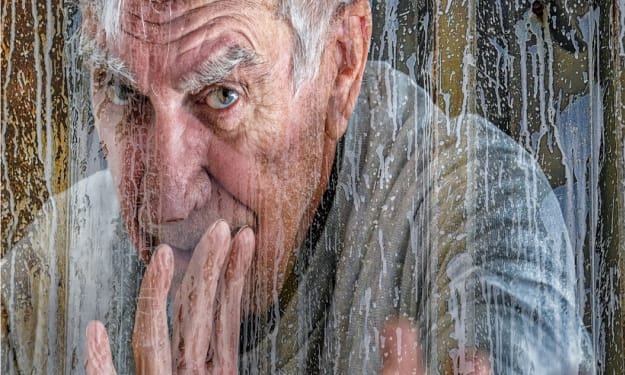Content warning
This story may contain sensitive material or discuss topics that some readers may find distressing. Reader discretion is advised. The views and opinions expressed in this story are those of the author and do not necessarily reflect the official policy or position of Vocal.
Long COVID can destroy your ability to exercise
Health

For some individuals with long Coronavirus, a significant side effect is trouble with working out, on the grounds that when these patients stretch past their boundaries it can prompt an overwhelming pattern of weariness that supports the gamble of deteriorating their condition.
These issues with work out, which is known as post-exertional discomfort (PEM), are additionally the characterizing side effects of myalgic encephalomyelitis/constant weakness condition (ME/CFS).
Presently another review, distributed in the diary Nature Correspondences, gives a clarification to this sensation of weariness, recommending that patients with long Coronavirus experience a scope of changes in their body in the wake of working out, including broad muscle harm, changes in muscle sythesis, and disturbed energy digestion.
This review "really shows the harm" to the body that is being brought about by post-exertional discomfort, says Lucinda Bateman, a doctor at the Bateman Horne Center, who works in treating patients with ME/CFS and long Coronavirus. As Bateman noticed, this incorporates appearing "the irritation, the harm, the scarring, the coagulations," which are undeniably tracked down in the muscles of long Coronavirus patients. Analysts additionally tracked down contrasts in the action of the mitochondria — the body's tiny energy processing plants — following activity.
The recommended reaction to PEM: find a steady speed.
Post-exertional discomfort set off by practice test
In the review, scientists enrolled 25 long Coronavirus patients. These patients were all youthful — normal age, 41 — with no other prior conditions, and were all encountering a huge decrease in their work and public activity due to long Coronavirus.
They needed to have present exertional disquietude on take part in the review, says Burglarize Wüst, an activity physiologist at Vrije College Amsterdam and a co-creator of the review.
(What causes long Coronavirus? The response may be in your stomach)
Members went through a cardiopulmonary activity test in which they were approached to practice until they were depleted, which then set off an episode of post-exertional discomfort.
To describe the progressions their bodies were going through, scientists drew blood and played out a muscle biopsy multi week before the activity test and one day later. The outcomes from these tests were then contrasted with the outcomes from 21 sound patients, who were matched for age and orientation.
"Ordinarily we know from the wide range of various ongoing infections that exercise is really great for you, that exercise is medication," Wüst says. "In any case, these patients really do deteriorate."
Changes to the body's energy frameworks
The deteriorating of side effects after practice was such a novel peculiarity that Wüst and his partners needed to comprehend what was going on in lengthy Coronavirus patients.
Key changes they found were contrasts in the body's capacity to create energy contrasted with solid patients. This included lower levels of oxidative phosphorylation — a biochemical cycle that yields ATP, a particle that the body utilizes for energy. They likewise saw that after practice there was a reduction in the movement of mitochondria, cell power stations that fabricate the ATP particles.
"Their mitochondrial capability is impeded quickly upon work out," Wüst says. "This can make them go into an endless loop, on the grounds that each time they overexert themselves, they get an accident in their mitochondrial capability and their digestion."
The effect on the body's capacity to fabricate energy are additionally reverberated by the outcomes from tests where patients with post-exertional disquietude performed two activity tests — 24 hours separated — in which they were approached to practice until depleted.
During the activity test on the subsequent day, patients with post-exertional discomfort showed a weakened capacity to produce energy and arrived at a mark of weariness significantly earlier and with definitely less activity than right from the start. For individuals without post-exertional discomfort, they can do very much like measures of activity on the two days before they arrive at weariness.
The place where the body shifts from involving oxygen for energy to anaerobic digestion — a biochemical cycle in the cell that produces less energy and is less effective — is when individuals will "hit the stopping point" as far as what they can do, as there is just a tiny measure of energy left for the body to utilize.
For prepared competitors, raising a ruckus around town can come toward the finish of a long distance race. For individuals with post-exertional discomfort, raising a ruckus around town can happen doing regular exercises, for example, taking a stroll around the block, scrubbing down, or doing housework.
Your anaerobic limit decides how much action you can do prior to crashing from fatigue, says Todd Davenport, a specialist at the College of the Pacific, whose examination centers around post-exertional disquietude. You don't work over your anaerobic edge for extremely lengthy or great, he adds.
(For some lengthy Coronavirus patients, practice is terrible medication)
This change to how the body utilizes energy is novel to patients with post-exertional disquietude. For patients with different circumstances that make it hard to practice — like cardiovascular breakdown, constant obstructive pneumonic illness, or cystic fibrosis — practice is as yet gainful and there could be no over-effort actuated change in how their body makes energy.
Changes to muscle fiber creation
Another key distinction that Wüst and his partners found were changes to the muscle structure of long Coronavirus patients. These people had a higher extent of quick jerk muscle filaments contrasted with solid patients.
Quick jerk muscle filaments are utilized for fast, unstable developments, like lifting weighty items or running, while slow-jerk muscle strands are utilized for more slow, steadier movement, for example, strolling or perseverance running.
"We realize that it is challenging to change fiber types in individuals, and that it doesn't occur with latency," Wüst says. "Something different is changing the fiber types."
In spite of the fact that they don't have the foggiest idea what is driving this change, it might assist with making sense of a portion of the weakness that patients are encountering. "[Fast-jerk muscle fibers] use energy speedier, and subsequently they weakness faster," Wüst says.
Changes to the body's capacity to recuperate
Notwithstanding the progressions in the body's capacity to utilize energy, and the structure of muscle strands, Wüst and his associates additionally found proof of muscle harm.
In a sound individual, "muscles get destroyed and developed, that is the manner by which you get better after you work out," says Maureen Hanson, a sub-atomic scientist at Cornell College, whose examination centers around understanding post-exertional discomfort in lengthy Coronavirus and ME/CFS patients. "The solid individual has a reaction to the activity, and that reaction is unique in relation to the reaction of the ME/CFS patient."
In various examinations did by Hanson and her teammates, long Coronavirus and ME/CFS patients show a disabled capacity to recuperate from work out. In a sound individual, the muscle harm brought about by exercise will begin getting fixed, making them get more grounded all the while. In an individual with post-exertional discomfort, this maintenance cycle doesn't work as expected, prompting gathered harm.
Proof of this debilitated activity recuperation was likewise found in muscle tissue of long Coronavirus patients in the Nature Correspondences study — indications of muscle scarring, aggravation, and blood clusters, both when the activity. "We saw a ton of muscle harm, and signs that there has been harm previously," Wüst says.
This harm is believed to be the consequence of numerous episodes of post-exertional disquietude, which is then intensified by a debilitated capacity to recuperate.
"Frequently when we see individuals, they are in a sluggish moving accident, it's these consistent floods of post-exertional discomfort," says Davenport, noticing that for some patients with long Coronavirus or ME/CFS, overexertion can occur while doing their day to day exercises, whether it's going to the supermarket or cleaning their teeth.
For patients with post-exertional discomfort, this study confirms the significance of remaining inside their energy cutoff points to limit crashes, a methodology that is regularly alluded to as pacing. "You need to limit the seriousness and term of post-exertional discomfort," Bateman says.
Supervisor's Note: The first adaptation of this article misquoted Ransack Wüst's alliance. It is Vrije College Amsterdam.
SHARE
TWEET
Peruse THIS NEXT
For some lengthy Coronavirus patients, practice is terrible medication
SCIENCECORONAVIRUS Inclusion
For some lengthy Coronavirus patients, practice is terrible medication
They used to run long distance races. Presently, it is debilitating to wash up. However, for these patients — who have one of the most incapacitating side effects of long Coronavirus — trust might be not too far off.
About the Creator
MD Syfullah
I AM WORK BOY






Comments (1)
Well researched! Great work!